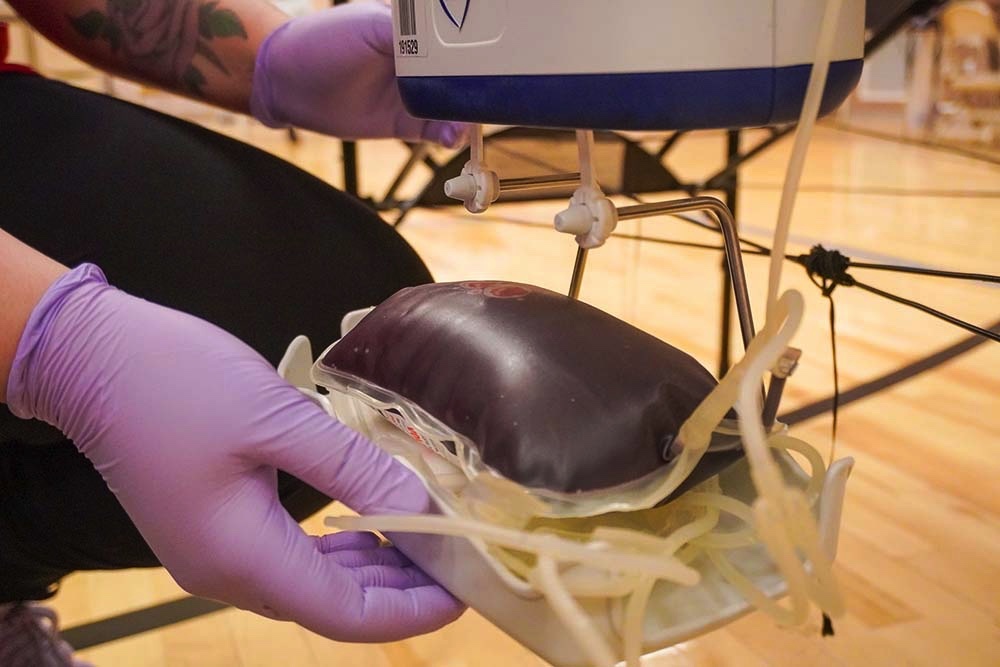USU student hosts blood drive amidst national shortage
During the worst blood shortage that the American Red Cross has experienced in 10 years, a Utah State University student hosted a blood drive on Feb. 21 in Logan.
Aaron Albrechtsen initially had the idea to host a blood drive when a leadership class he was taking, MSLE 3800, required a project that would put him in the role of a leader.
“When I was younger, my dad once told me, ‘I kind of feel like it’s my obligation to donate every once in a while just because I have the ability to have the universal blood type and be able to help people,’” Albrechtsen said. “That’s just one of the first things I thought of when we were thinking of our projects.”
According to Albrechtsen, the drive planned to allow walk-in appointments but ended up with a full schedule of people who volunteered to donate blood.
And continuing to face a lack of blood, the Red Cross appreciates such drives.
According to The Red Cross website, one car accident victim can require up to 100 units of blood with someone needing blood or platelets every two seconds in the U.S.
The Community Blood Center’s website provides more information, stating that an individual who began donating blood every 56 days at the age of 17 and stopped at the age of 79 will have donated 46.5 gallons of blood within their lifetime.
Kirsten Stuart, a public information officer for the Red Cross, explained some of the issues that result from blood shortages.
“There’s a concerning risk to patient care,” she said. “This is where doctors come in and they’re forced to make difficult decisions about who receives transfusions or who needs to wait for more blood products to become available.”
According to Stuart, Coronavirus has been a contributing factor to the lack of available blood. Certain protocols don’t allow for larger blood drives and some businesses are foregoing blood drives until COVID-19 restrictions are lifted.
“The Red Cross supplies about 40% of the nation’s blood,” Stuart said. “It has had to limit blood product distribution to hospitals because of the shortage. At times as much as one quarter of hospital blood needs are not being met.”
Stuart also said that every donation can save up to three lives, and encouraged those who are able to give blood to do so and said those who can’t can still help by volunteering to help run drives.
Keegan Cunningham, a USU student, has donated plasma frequently but had his first experience donating blood just a few weeks ago. He went through the process to fulfill a requirement for a health communications class and said he would do it again.
“I’m a pre-med student, so I know how important it is. There’s a lot of people that are alive today solely because of the process,” Cunningham said. “You never know if you or one of your loved ones is going to need to receive it.”
For any considering donating blood, Cunningham gave a piece of advice.
“Do it,” he said. “I think it’s a great thing to do.”
Albrechtsen also had a message for those on the fence about donating blood.
“It’s not as bad as you think. As long as you’re helping someone else and changing their lives, it’s worth it,” he said. “Instead of thinking of what could go wrong, think of how many lives you could change.”
-Brock.Marchant@usu.edu
Featured photo by: Phil Weber

